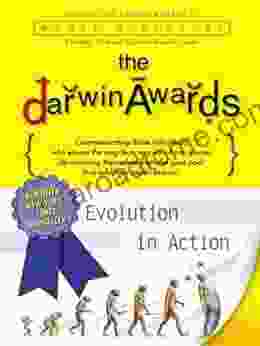Unlock the Power of Algorithms and Data Structures: A Comprehensive Guide for Aspiring Tech Professionals

In the ever-evolving landscape of technology, algorithms and data structures stand as the fundamental building blocks of efficient software systems. For aspiring tech professionals, mastering these concepts is paramount to unlocking a world of possibilities and creating solutions that shape the future. This comprehensive article will delve into the fascinating world of algorithms and data structures, providing a deep understanding of their principles, applications, and relevance in the industry.
Algorithms are step-by-step procedures designed to solve specific computational problems. They provide a structured approach to complex tasks, ensuring efficiency, accuracy, and consistency in the execution of code. Algorithms are classified into various categories based on their functionality, time complexity, and space complexity.
Time complexity measures the running time of an algorithm, which is typically expressed as a function of the input size. Space complexity, on the other hand, refers to the amount of memory required by the algorithm during its execution. Understanding these complexities is crucial for designing efficient and scalable software solutions.
5 out of 5
| Language | : | English |
| File size | : | 136416 KB |
| Text-to-Speech | : | Enabled |
| Enhanced typesetting | : | Enabled |
| Print length | : | 616 pages |
| Screen Reader | : | Supported |
Data structures are organized methods for storing and managing data in a computer's memory. They provide efficient access, insertion, deletion, and manipulation of data elements. Common data structures include arrays, linked lists, stacks, queues, trees, and graphs.
Each data structure has unique properties and is suited for specific applications. For instance, arrays offer fast random access to elements, while linked lists excel in insertion and deletion operations. Understanding the strengths and weaknesses of different data structures is essential for choosing the most appropriate one for a given task.
The applications of algorithms and data structures span a vast range of industries, including:
- Software Engineering: Algorithms and data structures form the foundation of software development, enabling efficient processing, storage, retrieval, and manipulation of data.
- Data Analytics: Algorithms are used for data mining, clustering, classification, and other analytical tasks, helping businesses extract insights from massive datasets.
- Artificial Intelligence: Algorithms and data structures power machine learning, natural language processing, and other AI applications, enabling computers to learn and make decisions based on data.
- Computer Graphics: Algorithms are used to create realistic 3D models, animations, and simulations, enhancing the visual experience in games and movies.
- Networking: Algorithms are essential for routing data, managing network traffic, and ensuring efficient communication over the internet.
In today's competitive tech landscape, mastering algorithms and data structures has become a sought-after skill for several compelling reasons:
- Enhanced Problem-Solving Abilities: Algorithms and data structures provide a systematic approach to problem-solving, enabling tech professionals to tackle complex challenges efficiently.
- Improved Code Quality: Understanding algorithms and data structures helps developers write cleaner, more efficient, and maintainable code that performs optimally.
- Increased Employability: Proficiency in algorithms and data structures is a highly valued skill among tech companies, giving candidates a competitive edge in the job market.
- Career Progression: Mastering these concepts is a stepping stone towards advanced roles in software engineering, data science, and other technical fields.
- Personal Fulfillment: The intellectual challenge and satisfaction of solving algorithmic problems can be highly rewarding and contribute to personal growth.
Effective learning of algorithms and data structures requires a combination of theoretical understanding and practical implementation. Here are some tips to enhance your learning experience:
- Start with Fundamentals: Begin by understanding the basic concepts of algorithms and data structures, focusing on their definitions, operations, and key properties.
- Practice with Coding: Implement algorithms and data structures in a programming language of your choice, experimenting with different scenarios and input sizes.
- Analyze Time and Space Complexity: Pay attention to the time and space requirements of your algorithms and data structures, optimizing them for efficiency.
- Study Real-World Applications: Explore how algorithms and data structures are used in various industries, understanding their practical relevance and applications.
- Join Online Communities: Engage with online forums, discussion groups, and coding challenges to learn from others and expand your knowledge.
To further your understanding of algorithms and data structures, consider exploring the following resources:
- Books:
- Algorithms, 4th Edition by Robert Sedgewick and Kevin Wayne
- Data Structures and Algorithms in Java, 6th Edition by Michael Goodrich and Roberto Tamassia
- Online Courses:
- Algorithms and Data Structures | Coursera by University of California, San Diego
- Data Structures and Algorithms: Deep Dive Using Java | Udemy by Tim Buchalka
- Coding Platforms:
- LeetCode
- HackerRank
- CodeChef
Mastering algorithms and data structures is an essential endeavor for aspiring tech professionals who seek to excel in the field. By understanding the principles, applications, and underlying complexities of these concepts, you can unlock a world of possibilities and create innovative solutions that shape the future of technology. Embrace the challenge of learning algorithms and data structures, and witness the transformative impact it has on your career and personal growth.
5 out of 5
| Language | : | English |
| File size | : | 136416 KB |
| Text-to-Speech | : | Enabled |
| Enhanced typesetting | : | Enabled |
| Print length | : | 616 pages |
| Screen Reader | : | Supported |
Do you want to contribute by writing guest posts on this blog?
Please contact us and send us a resume of previous articles that you have written.
 Book
Book Novel
Novel Page
Page Chapter
Chapter Text
Text Story
Story Genre
Genre Reader
Reader Library
Library Paperback
Paperback E-book
E-book Magazine
Magazine Newspaper
Newspaper Paragraph
Paragraph Sentence
Sentence Bookmark
Bookmark Shelf
Shelf Glossary
Glossary Bibliography
Bibliography Foreword
Foreword Preface
Preface Synopsis
Synopsis Annotation
Annotation Footnote
Footnote Manuscript
Manuscript Scroll
Scroll Codex
Codex Tome
Tome Bestseller
Bestseller Classics
Classics Library card
Library card Narrative
Narrative Biography
Biography Autobiography
Autobiography Memoir
Memoir Reference
Reference Encyclopedia
Encyclopedia Steve Leder
Steve Leder Vaishnavi Patel
Vaishnavi Patel Sulari Gentill
Sulari Gentill Umit Isikdag
Umit Isikdag Tiffany Field
Tiffany Field Steve Allen
Steve Allen Jeff Merrifield
Jeff Merrifield Vinita Hampton Wright
Vinita Hampton Wright Tom Dalzell
Tom Dalzell Velma E Love
Velma E Love Eddie Scarry
Eddie Scarry Tony Shaw
Tony Shaw Tim Parsons
Tim Parsons Tara A Devlin
Tara A Devlin Wayne Muller
Wayne Muller Susanna Xu
Susanna Xu Shafiek Joseph
Shafiek Joseph Victor Gioncu
Victor Gioncu Luna Carruthers
Luna Carruthers Leisha Kelly
Leisha Kelly
Light bulbAdvertise smarter! Our strategic ad space ensures maximum exposure. Reserve your spot today!

 Bret MitchellAn Insider Look At The Science Why We Keep Getting It Wrong And How To Start...
Bret MitchellAn Insider Look At The Science Why We Keep Getting It Wrong And How To Start...
 Chadwick PowellThe Traditions of Shiva and Dionysus: A Journey into the World's Two Oldest...
Chadwick PowellThe Traditions of Shiva and Dionysus: A Journey into the World's Two Oldest...
 Walt WhitmanThe Ultimate Guide to Black Sverre Openings: Uncover the Secrets of Strategic...
Walt WhitmanThe Ultimate Guide to Black Sverre Openings: Uncover the Secrets of Strategic...
 Dylan MitchellUnlocking Science-Based Solutions: An Evidence-Based Approach Book Explores...
Dylan MitchellUnlocking Science-Based Solutions: An Evidence-Based Approach Book Explores... Edgar HayesFollow ·7.9k
Edgar HayesFollow ·7.9k Hamilton BellFollow ·19.1k
Hamilton BellFollow ·19.1k E.E. CummingsFollow ·15.5k
E.E. CummingsFollow ·15.5k Charles DickensFollow ·5.8k
Charles DickensFollow ·5.8k Sidney CoxFollow ·18.7k
Sidney CoxFollow ·18.7k Josh CarterFollow ·14.6k
Josh CarterFollow ·14.6k Donovan CarterFollow ·7.5k
Donovan CarterFollow ·7.5k Dale MitchellFollow ·6.9k
Dale MitchellFollow ·6.9k

 Timothy Ward
Timothy WardSteamy Reverse Harem with MFM Threesome: Our Fae Queen
By [Author...

 Cody Blair
Cody BlairThe Ultimate Guide to Energetic Materials: Detonation and...
Energetic materials are a fascinating and...

 Kenzaburō Ōe
Kenzaburō ŌeProstitution, Modernity, and the Making of the Cuban...
By Emily A....

 Kirk Hayes
Kirk HayesUnveil the Enchanting World of The Rape of the Lock by...
Alexander Pope's epic...

 Ivan Turgenev
Ivan TurgenevTantric Quest: An Encounter With Absolute Love
Embark on a Tantric Quest to...

 Gary Reed
Gary ReedThe Darwin Awards: Evolution in Action
The Darwin Awards are a...
5 out of 5
| Language | : | English |
| File size | : | 136416 KB |
| Text-to-Speech | : | Enabled |
| Enhanced typesetting | : | Enabled |
| Print length | : | 616 pages |
| Screen Reader | : | Supported |




